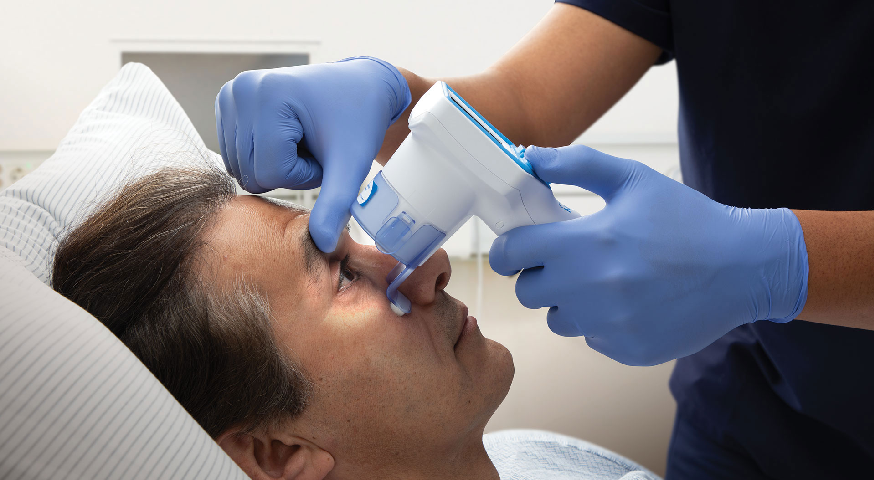A key factor that has been extremely advantageous in neurological assessment is assessing pupil reactivity. Traumatic brain injury can affect the neural function.
This blog will focus on pupil assessment, elaborating on different methods used and sophisticated neurophysiological instruments such as the NPi pupillometer that guarantee accurate assessment.
Pupil reactivity: Inside Windows of a Neurological World
There’s a beauty and wonder lie in the complexity of the human eye. The pupil is located at its center and it is responsible for regulating the light rays coming in to be reflected to the nerve tissues. However, this is not only about light rather this black dot provides a great insight into how the brain works.
Why Pupil Evaluation Matters?
Early Detection of Traumatic Brain Injury: Pupillary response in traumatic brain injury entails clinical evaluation of pupils. Traumatic brain injury patients’ pupillary responses may also indicate elevated intracranial pressure and possible neural injury.
Neurological Monitoring: Pupillary assessment is an important tool in many neurological conditions like stroke and brain tumors and must be done continuously to monitor a patient’s situation.
Drug Effects: For determining how certain medications affect the nervous system, physicians use pupillary measurement.
Techniques for Pupil Evaluation
Pupil evaluation needs to be accurate, hence it requires both skills and good instruments. Here are some techniques to ensure precise measurement:
Direct Pupil Assessment: It includes having someone illuminate a flashlight in the eye and watching the pupil’s reaction to that. A few common reactions are: Size, shape, and speed at which contraction and dilatation occur.
Indirect Pupil Assessment: Such a technique includes the swinging flashlight in which a penlight is taken off from one eye and put into another. Abnormalities are identified in comparison to pupil’s responses.
Neurological Tools: The NPi Pupillometer
Medical professionals who want to assess the pupils more comprehensively may use such modern techniques and neurological tools as NPi pupillometer. This cutting-edge device offers several advantages:
Objective Measurement: Pupillometry data obtained using NPi pupillometer is objective and quantitative reducing the chance for error sources during assessment.
Real-time Monitoring: This makes it possible to carry out instant evaluation of pupillary reactions and detect any variations.
Data Storage: It saves data with which future examinations can be performed on patients.
Research Applications: In scientific research circles, the NPi pupillometer has shown potential for producing better measurement data for neuroscientific purposes.
Pupillometry: An Overview
Accurate assessment depends on understanding the science of pupil measurement. Any disturbance in the autonomous nervous system will cause distractions in these pupillary responses since this system controls the pupil’s size. When assessing pupillary response in traumatic brain injury, professionals look for the following indicators:
Anisocoria: That is also unequal pupils, which may indicate the onset of neurological problems.
Sluggish Pupils: The slow or diminished constriction of pupils implies something wrong.
Fixed Pupils: Patients who do not respond to light mean they might be suffering from neurological injury.
Tonic Pupils: Another serious situation involves patients’ pupils which respond at first but later become sluggish or uncooperative.
Clinical Benefits of NPi Pupillometer
When it comes to assessing pupil reactivity, the NPi pupillometer offers some distinct advantages over traditional methods:
Increased Precision: It is a very accurate measuring tool that eliminates any subjectivity in interpreting pupillary responses.
Time Efficiency: The NPi pupillometer is a fast and effective measurement tool that may prove vital in emergency circumstances.
Non-invasive: It is a non-invasive device and can be used on young as well as old patients.
Therefore, the NPI pupillometer has found several uses across different medical fields, such as neurology, ophthalmology, and critical care.
Finally, pupil evaluation is an effective method that the skillful doctor can use. Pupil measurement provides vital information about neurology and traumatic brain injuries in a patient. In this regard, the NPi pupillometer can be viewed as state-of-the-art because it provides unbiased data for improving patient management. As we examine the complexities of a man’s body, state-of-the-art equipment such as an automated NPi Pupillometer should be used in a bid to provide the requisite healthcare to individuals who depend on us.

